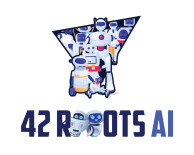Large Language Models (LLM): An In-Depth Look
Among the most widely recognized artificial intelligence (AI) models today are ChatGPT, specifically the GPT-3.5 and GPT-4 versions, which belong to the category of Large Language Models (LLM). These models have gained significant attention in recent years due to their impressive natural language understanding and generation capabilities.
The term “Large Language Models” is used to describe this class of AI models because of the enormous amounts of textual data that they leverage during the training process. To acquire the knowledge and understanding necessary to perform their tasks, LLMs are exposed to vast collections of text from diverse sources such as books, articles, and websites.
This extensive training process is carried out through a technique called “unsupervised learning,” which allows the model to analyze and identify patterns, structures, and relationships within the data without explicit human guidance. As a result, LLMs like ChatGPT are able to understand context, generate coherent responses, and even exhibit some degree of creativity in their outputs.
Due to the sheer volume of data used in training these models, some experts have speculated that OpenAI, the organization responsible for the development of ChatGPT and other AI chat bots, might have reached a saturation point with GPT-4 where they exhausted the available text data to further train the model. This hypothesis suggests that any future improvements to the model’s performance might require alternative approaches, such as more efficient learning algorithms, better pre-processing of the input data, or even the incorporation of other types of data like images or videos to provide additional context and knowledge.
AI Image Models: A Comprehensive Overview
In the field of artificial intelligence (AI), image models have experienced remarkable advancements in recent years. Among the most notable AI image models are DALL-E by OpenAI, Stable Diffusion, and Midjourney. These models have demonstrated the ability to generate stunning visuals, showcasing the impressive progress made in the domain of AI-driven image synthesis.
DALL-E, developed by OpenAI, is a prime example of an AI image model that leverages deep learning techniques to generate novel and creative images from textual descriptions. By combining the strengths of both generative and language models, DALL-E can interpret a wide variety of textual prompts and produce corresponding visual representations with impressive accuracy and creativity. This ability has far-reaching implications for art, design, advertising, and more.
Stable Diffusion, another cutting-edge AI image model, employs a unique approach to generating images by simulating the diffusion process. This model reverses the diffusion process to synthesize images iteratively, resulting in visually coherent and contextually relevant outputs. Stable Diffusion has demonstrated remarkable capabilities in generating high-quality images across a diverse range of subjects and styles.
Midjourney, on the other hand, has made significant strides in producing photorealistic images that are virtually indistinguishable from actual photographs. This AI image model has also shown the ability to generate images that appear to be created by a real human artist, exhibiting a profound understanding of artistic styles, techniques, and aesthetics. The results produced by Midjourney are a testament to the incredible progress in the field of AI-driven image synthesis.
In conclusion, AI image models like DALL-E, Stable Diffusion, and Midjourney have reached an extraordinary level of sophistication, demonstrating the potential to revolutionize various industries such as art, design, entertainment, and advertising. As these models continue to evolve, we can expect even more astonishing capabilities and applications in the future.
Amazing!
AI Sound Models
There are a variety of AI sound models out there.
There are 2 main categories that I see right now: (1) Text to Voice & (2) AI Music Generators.
Both have wide ranging applications.
AI Video Models
While a few AI videos have gone viral, overall, as of April 2023, AI video models are not really there yet…
…but, it seems like just a matter of time before they get to being able to create realistic looking videos.
Narrow AI Models
Narrow AI models is where there is virtually limitless untapped potential (in our opinion).
AI models that are created for a specific purpose (vs all the general models above).
We, at 42 Robots AI, feel confident that over the coming years, narrow AI models will play a huge role in changing the world.
By creating an AI model for a specific use case or specific target market opens up a world of opportunities. Essentially, you can the same quality results as a huge, $100 mil+ cost, AI model, but for a fraction of the price. Flip it around and, still for less of a cost, you should be able to get a BETTER result than any general model that costs 100x to build and train.

